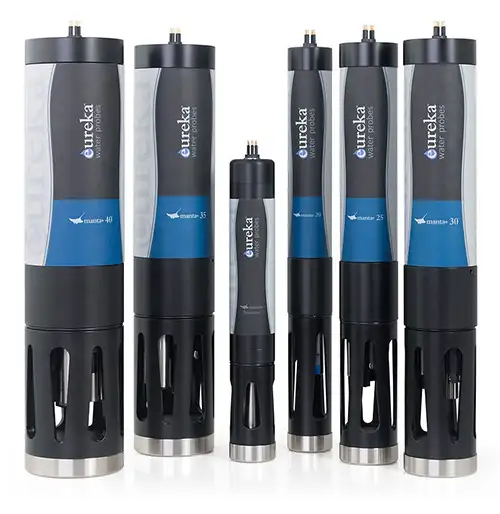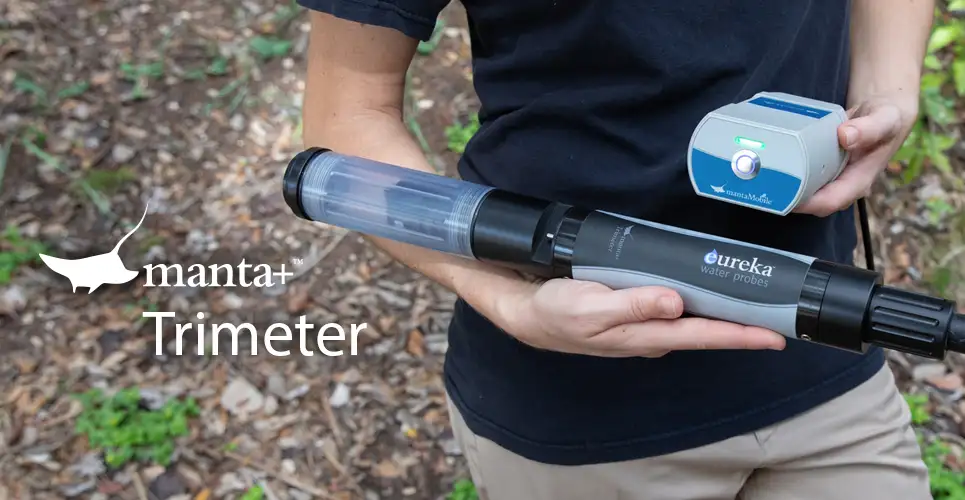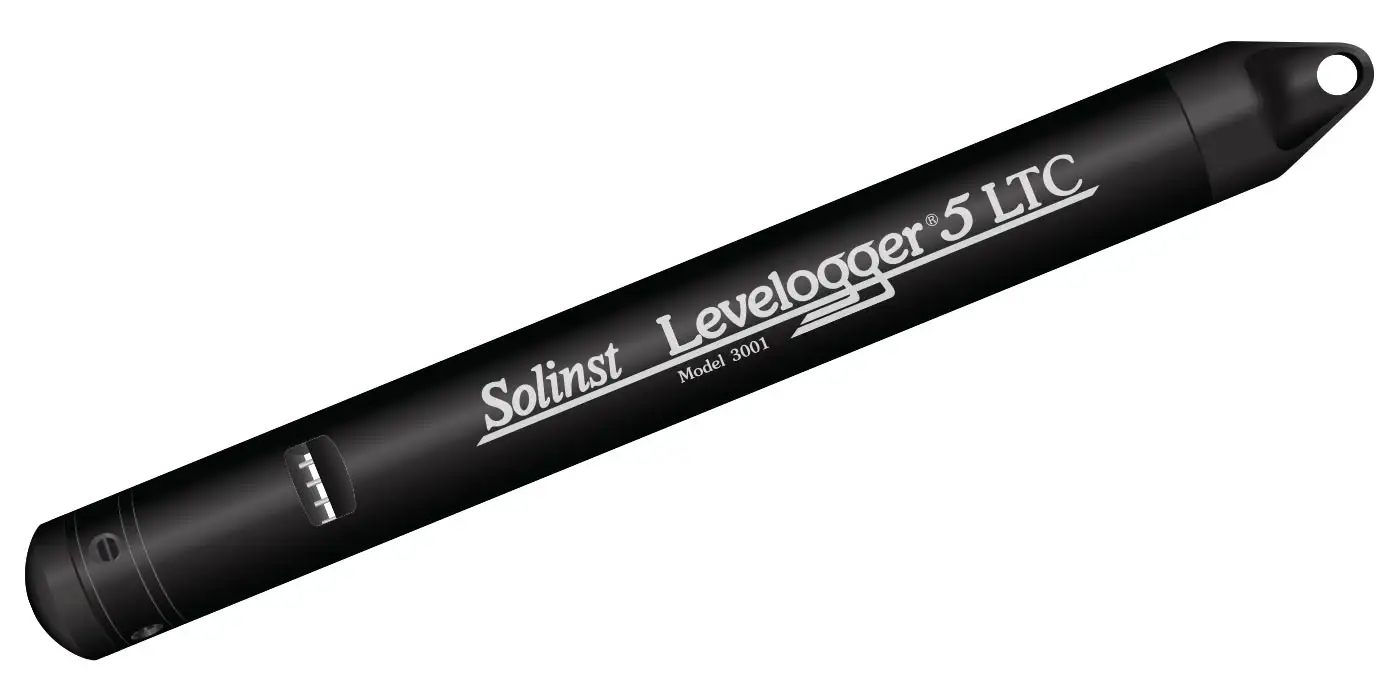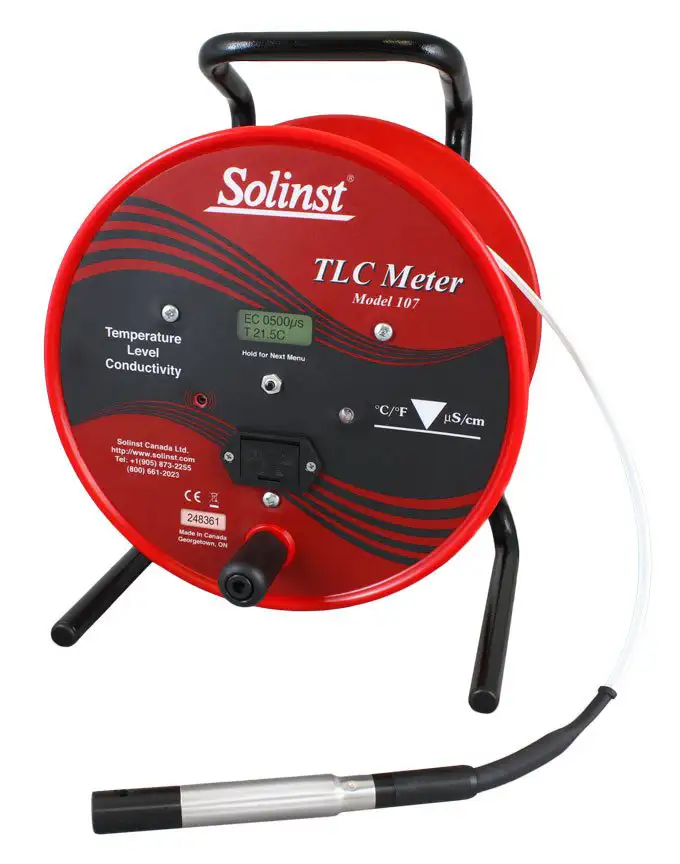Turbidity Sensor: Water Quality Probe
Solinst Eureka
2113 Wells Branch Pkwy, Suite 4400
Austin, TX, USA
78728
Tel: +1 512-302-4333
Fax: +1 512-251-6842
email: [email protected]
Water Quality Probes
Solinst Eureka, a global leader in the design and manufacture of multiparameter water quality sondes.
Solinst Field Services
Safeguard your project’s success and mitigate any potential for downtime or additional costs.
Why measure Turbidity?
Turbidity is an indication of the amount of light that will pass through a column of water. Clear waters have low turbidity; waters with high suspended solids have high turbidities.
Turbidity is measured for several reasons. First, turbidity is a gross indicator of the aesthetic value of a water body – a river with a high turbidity looks muddy and discolored. High turbidity is a major reason for a TMDL listing.
Second, low turbidity maximizes transmission of the sunlight needed for photosynthetic productivity – clear lakes will have higher biological productivity because a minimum of sunlight is blocked by suspended particles.
Third, high turbidity reduces the ability of higher life forms, such as fish, to forage and reproduce. On the other hand, low turbidity makes the smaller fish more subject to predation.
Changes in long-term turbidity trends can signal the need for more detailed chemical study of the water and its contamination sources.
How is Turbidity measured?
In natural waters, turbidity is most often measured by an optical sensor according to the ISO 7027 standard – the amount of light scattered by suspended particles at 90 degrees to a beam of infrared light. In very clean waters, little light is scattered, and the turbidity reading is low. In turbid waters, much light is scattered by suspended particles and the turbidity reading is high.
There are at least five problems with turbidity measurement:
- Turbidity has no analytical definition, so there is no way to establish if a turbidity reading is “correct”.
- There is significant latitude in the ISO 7027 design specification, so even sensors conforming to ISO 7027 can give different readings.
- There are several ways to linearize the sensor output, including matching the Hach 2100 turbidimeter, matching dilutions of formazin, and matching dilutions of polymer-bead standards.
- There are several calibration solutions, including formazin, polymer beads, and a few custom solutions formulated by individual manufacturers.
- There are a dozen or more turbidity-measurement units, including NTU (nephelometric turbidity unit), FTU (formazin turbidity unit), NTMU (nephelometric turbidity multibeam unit), FAU (formazin attenuation unit), and FNU (formazin nephelometric units) etc., that complicate comparisons of turbidity data bases.
Most multiparameter instruments employ ISO 7027, and report in FNU’s or NTU’s. There is another technique, called optical backscatter, sometimes used instead of the ISO 7027, because it can measure turbidities corresponding to up to 7000 NTU or more, where the ISO 7027 sensor is limited to about 3000 NTU.
Turbidity uses a two-point calibration; one point is zero (turbidity-free water), and the other point should be a standard approximating the turbidity of the water you intend to monitor. Care must be taken during calibration to ensure that external effects are kept to a minimum and that enough calibration standard to cover the sensor’s “optical volume” – imagine tennis ball stuck on the end of the sensor; make sure there is nothing in the volume represented by that ball except the calibration solution.
Solinst Eureka recommends both polymer-bead calibration solutions, and formazin standards.
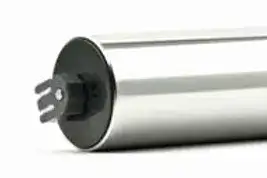
Turbidity Sensor for
Water Quality Sondes
- Range
0 to 4000 FNU - Accuracy
±.3 FNU or ±2% of reading w.i.g., 0 – 1000 FNU
±4% of reading, 1000 – 4000 FNU - Resolution
0.01 - Units
FNU (NTU optionally) - Calibration
two points with lab-qualified sample, Formazin,
or polymer beads solution - Maintenance
cleaning and calibration
occasional replacement of the wiper element - Sensor Life
3 years - Sensor Type
ISO 7027 standard with integrated wiper
What should I know about turbidity measurement?
Turbidity measurements are not strongly affected by other water conditions (such as temperature). However, any material (algae, sediment, etc.) that accumulates on the optical surfaces of the turbidity sensor is indistinguishable from material in the water; that is why most turbidity sensors have wipers to clean the window(s). Turbidity sensors require no regular maintenance, other than cleaning, occasional wiper replacement, and calibration. The sensor window(s) should also be periodically inspected for scratches which could affect readings.
Features of Solinst Eureka’s Turbidity Sensor
All ISO 7027 turbidity sensors operate similarly, but all are inherently nonlinear. Solinst Eureka’s turbidity sensor output has been linearized with formazin, chosen as the linearizing medium because of its role in quantifying turbidity.
Even if two different manufacturer’s ISO 7027 turbidity sensors are calibrated with the same formazin standard, each linear across the sensor’s range, they still may report different turbidity values when measuring side by side in the same field waters. The magnitude of the difference varies with the composition of the water. Neither sensor is right or wrong – they’re just different because of the leeway in the definition of turbidity, and also because of the various linearization and filtering methods used. Eureka has a “correction” solution. The output of Eureka’s turbidity sensor may be modified, so its data are comparable to the data you have already gathered with a previously used sensor – or maybe one from a model still in use. This is done using the Manta software’s “custom parameter” feature. A correction factor (determined from side-by-side field testing) is applied to correct for the slight offset. Although a noticeable shift is not anticipated, this does provide a way to report values expected, based on historical turbidity data.
Solinst Eureka’s turbidity sensor employs a modest filtering function to remove data spikes (both positive and negative) caused by relatively large objects, such as bubbles and leaf debris, that are not usually considered turbidity particles and whose spikes should not appear in turbidity data. The filtering period (five seconds) is short, ensuring that true turbidity trends in natural waters are accurately preserved.
The wiper element in Solinst Eureka’s turbidity sensor is built like a window-cleaner’s squeegee; other manufacturers’ wipers are usually absorbent pads, or brushes, that are more likely to entrain grit that scratches the sensor’s optical window. Eureka’s turbidity sensor wiper is easily replaced at a nominal cost.
Total Suspended Solids (TSS)
There is no direct way to measure TSS because suspended-solids (SS) particles come in so many sizes, shapes, and colors. However, if your SS situation is relatively stable, i.e. your SS are not tiny clay particles one day and chunky organic particles the next, you can create a chart relating TSS and turbidity data.
Measure the turbidity of a liter of your “typical” water, and then determine its TSS by conventional laboratory means. Next, dilute your original water sample with 50% de-ionized water and repeat the turbidity-TSS analyses. Finally, dilute the diluted sample by another 50% and repeat the turbidity-TSS analyses. You now have three turbidity readings, each with a corresponding TSS number. If you are lucky, you will find a linear relationship between turbidity and TSS. Otherwise, you may have to determine a more complex relationship for estimating TSS from turbidity readings, for instance with Excel’s trend-line function.
The procedure above uses the serial dilution (50%) method to obtain three data pairs, but you can use any set of dilutions you wish, and any number of dilutions you wish.
Related Products
Manta Series Water Quality Probes
Solinst Eureka offers the largest selection of water quality sensor technologies in the industry. So in addition to standard configurations, each probe may be customized for your specific application. Pick sensors of your choice to fully populate larger probes, or add a battery pack to convert a probe to a logging device.
Manta Trimeter Water Quality Probe
The Trimeter holds any one sensor* from the Sensor Parameters list, Plus temperature and depth sensors (both are optional). For example, a Trimeter configuration could be turbidity, temperature, and depth. Another example could be DO and temperature.
Water Level, Temperature & Conductivity Datalogging
The Levelogger 5 LTC measures and logs water level fluctuations, temperature and conductivity. It is programmed to record at intervals as often as 2 seconds. It includes an 8-year battery, memory for 100,000 sets of readings, and comes in 6 pressure ranges. A PFAS-free coating (inside and out) provides superior corrosion and abrasion resistance.
TLC Meter – Measure Accurate Temperature, Level & Conductivity
A TLC Meter provides accurate, stable temperature and conductivity measurements, displayed on a convenient LCD display for easy reading. Static water level and depth of readings are read off Solinst flat tape, which is precisely laser-marked every mm or 1/100 ft. Tape lengths are available to 300 m (1000 ft).

